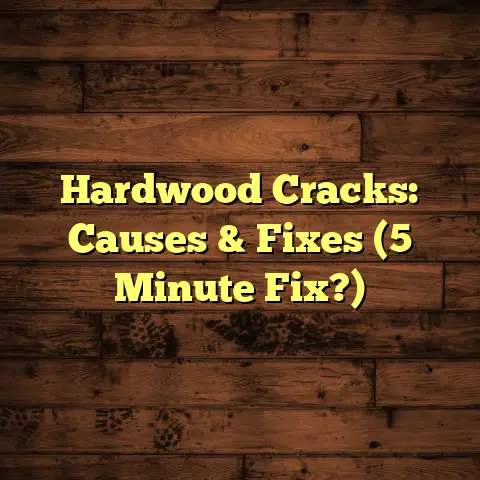Rubber Gym Flooring Cost (Explained)
When setting up a gym, choosing the right flooring is crucial. Rubber gym flooring has become increasingly popular due to its durability, shock absorption, and ease of maintenance. However, understanding the costs associated with installing rubber flooring is essential for budget planning. This article provides a comprehensive breakdown of the factors influencing rubber gym flooring costs, installation considerations, and comparisons with alternative flooring options.
Major Cost Factors Impacting Rubber Gym Flooring Installation
1. Area Size
The total area of the space where the rubber flooring will be installed is perhaps the most significant cost determinant. Larger areas naturally incur higher costs due to the increased material and labor requirements.
2. Rubber Type
Rubber flooring comes in several types:
- Rolled Rubber: Typically less expensive, ideal for larger areas.
- Interlocking Tiles: More versatile and easier to install, but can be pricier.
- Rubber Sheets: Offer seamless looks but may have higher installation costs.
3. Material Quality
The quality of rubber flooring affects its durability and performance. Higher-grade materials often come with a higher price tag, but they can offer better long-term value.
4. Labor Costs
Labor costs can vary significantly based on geographic location, the complexity of the installation, and whether you hire a professional or go the DIY route.
5. Additional Considerations
- Floor Removal: If existing flooring needs to be removed, it can add to labour costs.
- Subfloor Replacement: Poor subfloor conditions may require additional work and materials.
- Installation Type: Glue-down installations may cost more than floating installations.
- Room Layout: Unusual room shapes or obstacles such as columns can complicate installation and increase costs.
Cost Breakdown and Price Ranges
Average Costs
| Type of Rubber Flooring | Cost per Square Foot |
|---|---|
| Rolled Rubber | $1.50 – $3.50 |
| Interlocking Tiles | $2.00 – $5.00 |
| Rubber Sheets | $2.50 – $6.00 |
Estimated Total Costs by Project Size
- Small Gym (100 sq ft): $150 – $600
- Medium Gym (500 sq ft): $750 – $3,000
- Large Gym (1,000 sq ft): $1,500 – $6,000
Installation Costs
Labor costs for installation typically range from $1.00 to $3.00 per square foot, depending on the complexity of the job.
Comparing Costs: Rubber vs. Alternative Flooring Options
| Flooring Type | Cost per Square Foot | Pros | Cons |
|---|---|---|---|
| Rubber | $1.50 – $6.00 | Durable, shock-absorbent | Can be expensive |
| Laminate | $0.70 – $2.50 | Affordable, easy to install | Less durable than rubber |
| Vinyl | $0.50 – $3.00 | Water-resistant, versatile | Can dent or scratch easily |
| Carpet | $0.80 – $5.00 | Soft underfoot | Harder to clean; retains allergens |
Signs Your Rubber Flooring Needs Replacement
- Visible Damage: Tears, rips, or significant wear can signal that replacement is necessary.
- Odours: Persistent smells may indicate underlying issues or degradation.
- Mold Growth: Moisture problems can cause mold to develop beneath the flooring.
Refurbishing vs. Replacing
If your rubber flooring shows minor wear but is structurally sound, refinishing may be a viable option. However, extensive damage usually requires full replacement.
Pros and Cons of Rubber Gym Flooring
Pros
- Durability: Rubber floors can withstand heavy weights and high traffic.
- Shock Absorption: Ideal for exercises that involve jumping or heavy lifting.
- Low Maintenance: Easy to clean and resistant to moisture.
Cons
- Cost: Initial investment can be higher than other flooring options.
- Odour: New rubber flooring may have a strong smell initially.
- Slipperiness: When wet, some rubber floors can become slippery.
Professional Installation vs. DIY
Cost Differences
- Professional Installation: $1.00 – $3.00 per sq ft for labor.
- DIY Installation: While it can save money, consider tool costs (e.g., adhesive, knee pads) and time investment.
Skills Required
Proper installation requires knowledge of techniques and tools. Mistakes can lead to uneven surfaces or premature wear.
Questions to Ask Flooring Contractors
- What type of rubber flooring do you recommend for my needs?
- Can you provide references from previous clients?
- What is included in your estimate?
- How long will the installation take?
- What kind of warranty do you offer?
Care and Maintenance Tips for Longevity
- Regular Cleaning: Sweep or vacuum regularly to remove debris.
- Use Appropriate Cleaners: Avoid harsh chemicals; use mild soap and water.
- Address Spills Immediately: Prevent moisture from penetrating the floor.
- Inspect Regularly: Look for signs of wear or damage to catch issues early.
Conclusion
Rubber gym flooring is an excellent choice for both commercial and home gyms due to its durability and performance benefits. By understanding the various cost factors and making informed decisions about materials and installation methods, you can ensure you get the best value for your investment. Whether you choose to hire professionals or take on a DIY project, proper planning and maintenance will help keep your gym flooring in top shape for years to come.





